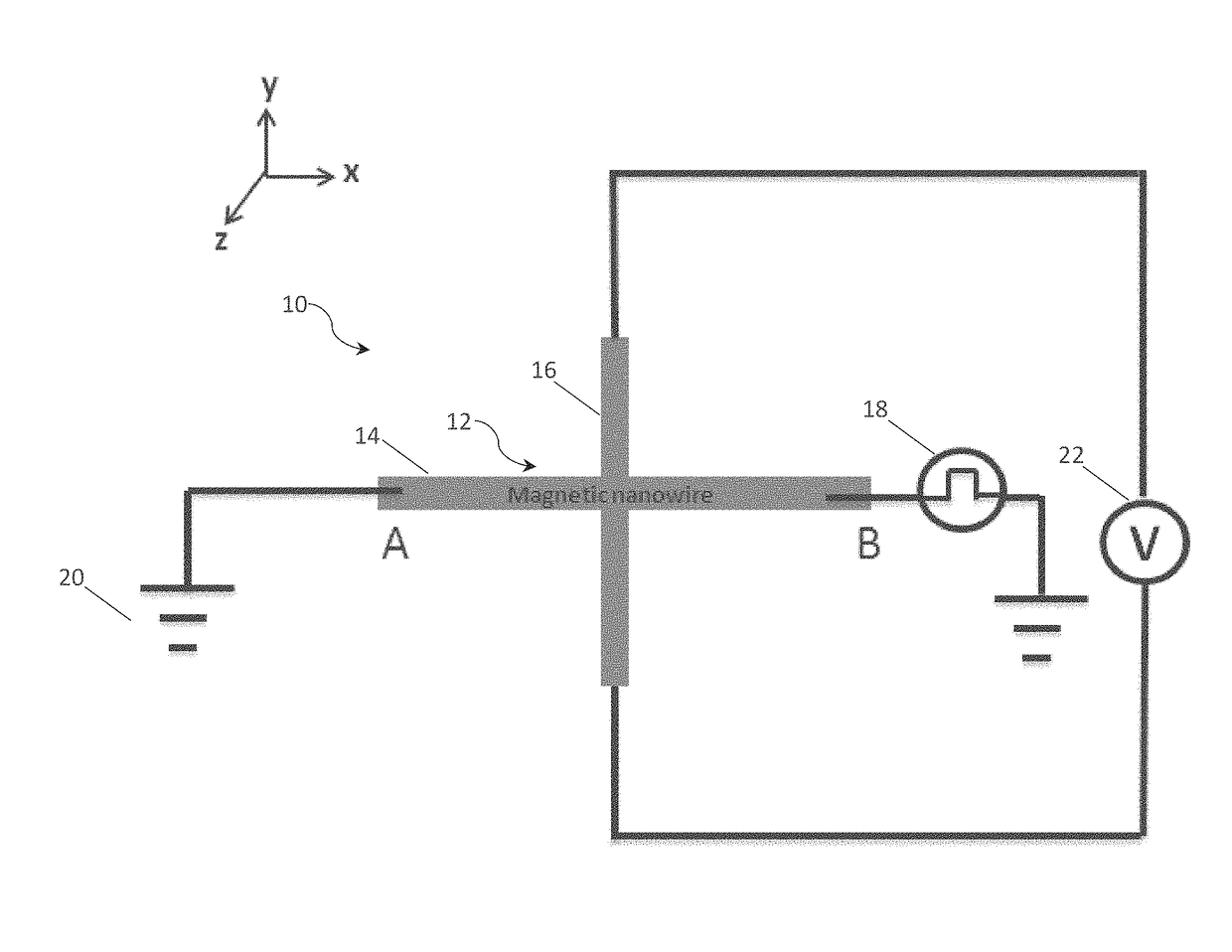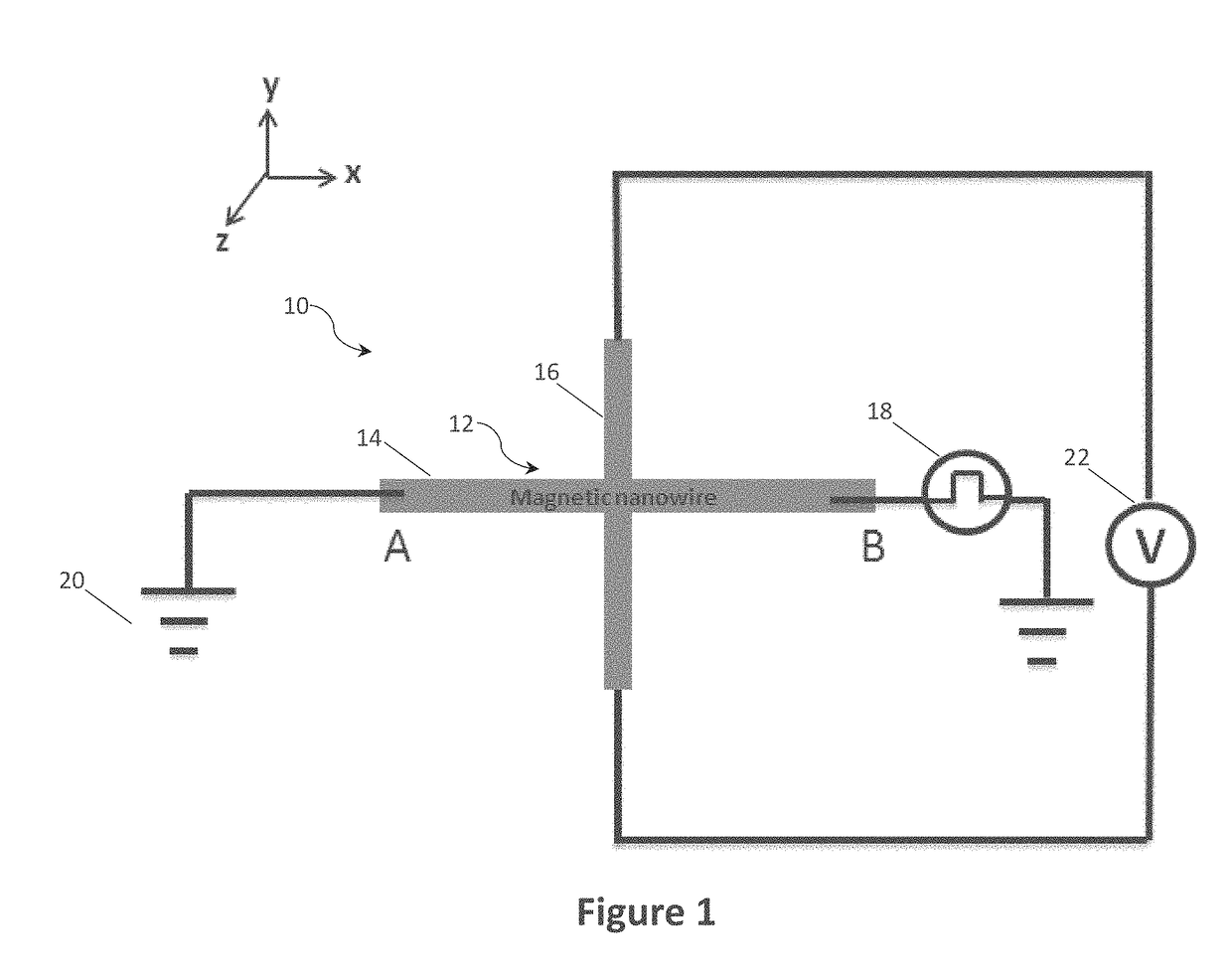Magnetic random number generator
a random number generator and magnetic field technology, applied in the field of magnetic random number generators, can solve the problems of not stochastic, deterministic dw generation process, inability to use random number generators, etc., and achieve the effects of less exchange interaction, higher demagnetization energy and spin transfer torque, and greater reliability
- Summary
- Abstract
- Description
- Claims
- Application Information
AI Technical Summary
Benefits of technology
Problems solved by technology
Method used
Image
Examples
Embodiment Construction
[0054]In accordance with a first embodiment of the present invention there is provided a magnetic random number generator (MRNG) 10 as illustrated in FIG. 1. The magnetic random number generator 10 comprises a perpendicular magnetic anisotropy (PMA) Hall cross structure 12 comprising a first nanowire arm 14, extending in the x-direction as drawn, between terminals A and B and a second nanowire arm 16, extending in a y-direction as drawn, through the centre of the first nanowire arm 14. An in-plane pulsed current generator 18 is connected to terminal B and configured to generate stochastic nucleation of domain walls (DWs) in the Hall cross structure by sending current pulses through the Hall cross structure 12. Terminal A is connected to earth 20 and a sensor 22 in the form of a voltmeter is connected between the ends of the second nanowire arm 16 to (indirectly) measure a parameter such as resistance (RHall) of the Hall cross structure 12 upon DW nucleation. As will be understood by...
PUM
 Login to View More
Login to View More Abstract
Description
Claims
Application Information
 Login to View More
Login to View More - R&D
- Intellectual Property
- Life Sciences
- Materials
- Tech Scout
- Unparalleled Data Quality
- Higher Quality Content
- 60% Fewer Hallucinations
Browse by: Latest US Patents, China's latest patents, Technical Efficacy Thesaurus, Application Domain, Technology Topic, Popular Technical Reports.
© 2025 PatSnap. All rights reserved.Legal|Privacy policy|Modern Slavery Act Transparency Statement|Sitemap|About US| Contact US: help@patsnap.com



